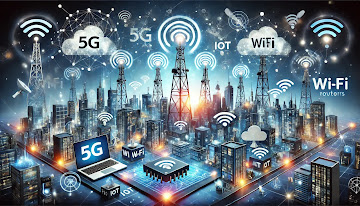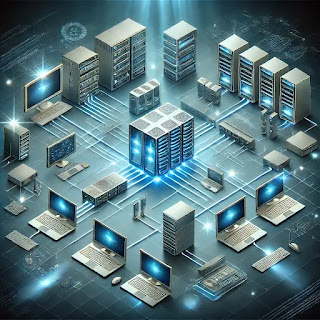Modern networks, including enterprise infrastructures, IoT ecosystems, and cloud environments, face a wide array of cybersecurity challenges due to increasing complexity, evolving attack vectors, and growing interconnectivity. Some of the most pressing issues include:
1. Advanced Persistent Threats (APTs)
APTs involve prolonged and targeted cyberattacks by well-funded adversaries, such as nation-states or cybercriminal organizations. These attacks use sophisticated methods to infiltrate networks, steal sensitive data, and remain undetected for extended periods.
2. Ransomware and Malware Attacks
The rise of ransomware attacks has significantly impacted businesses and critical infrastructures. Attackers encrypt files and demand ransoms in cryptocurrencies. Malware, including trojans and worms, can spread across networks, disrupting operations.
3. Zero-Day Vulnerabilities
Hackers exploit unknown software vulnerabilities before they are patched. These zero-day attacks pose a major risk, as no immediate defense is available until security updates are developed and deployed.
4. IoT Security Risks
The proliferation of IoT devices has expanded the attack surface. Many IoT devices lack robust security mechanisms, making them vulnerable to exploitation, botnets (e.g., Mirai), and unauthorized access.
5. Cloud Security Challenges
Organizations increasingly rely on cloud services, but misconfigured cloud storage, insecure APIs, and weak authentication methods can expose sensitive data to cyber threats.
6. Insider Threats
Employees, contractors, or partners with access to internal systems can pose security risks, whether intentionally or due to negligence. Insider threats are harder to detect and prevent compared to external attacks.
7. Phishing and Social Engineering Attacks
Cybercriminals manipulate individuals through phishing emails, fraudulent websites, or impersonation attacks to steal credentials, deploy malware, or compromise networks.
8. Supply Chain Vulnerabilities
Attackers exploit vulnerabilities in third-party vendors, software providers, or hardware manufacturers to infiltrate an organization’s network. Supply chain attacks, such as the SolarWinds breach, highlight this growing threat.
9. 5G and Edge Computing Risks
The expansion of 5G networks and edge computing introduces new security risks, such as increased attack surfaces, decentralized data processing, and potential vulnerabilities in telecom infrastructure.
10. Compliance and Regulatory Challenges
Organizations must adhere to stringent cybersecurity regulations (e.g., GDPR, NIST, ISO 27001) and face penalties for non-compliance. Keeping up with evolving standards and data protection laws remains a challenge.
Mitigation Strategies
- Zero Trust Architecture (ZTA): Implementing strict identity verification and least privilege access.
- AI and Machine Learning in Cybersecurity: Enhancing threat detection through behavior analytics.
- Regular Patching and Updates: Fixing vulnerabilities before exploitation.
- Strong Authentication and Encryption: Using MFA and end-to-end encryption to protect sensitive data.
- Security Awareness Training: Educating employees to recognize and prevent cyber threats.
See more Info : network.sciencefather.com
Nomination: https://networking-events.sciencefather.com/award-nomination/?ecategory=Awards&rcategory=Awardee





